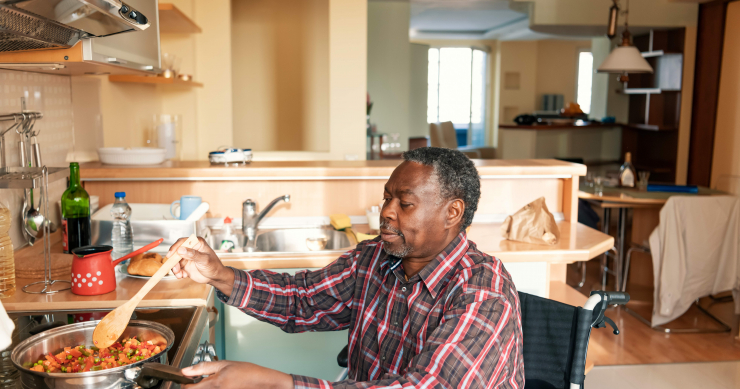FROM THE TIME OF ITS FOUNDING, the United States has faced the challenge of maintaining strong national laws that protect the American ideal of justice, while guarding against federal overreach that disempowers states and communities. But if we have learned anything in the past few years, it is that discrimination is still pervasive in our country and that our government has a vital role to play in eliminating it.
Progress toward Civil Rights
The Fair Housing Act, part of the larger Civil Rights Act of 1968 signed into law after the assassination of Dr. Martin Luther King, Jr., was propelled by a historic movement against race discrimination in housing and every other area of civic life. Over time, the list of “protected classes” under the law has grown, including with the addition of people with disabilities in 1988. Yet across the United States, discriminatory housing practices have persisted in spite of this law, perpetuating both segregation and poverty. It was in recognition of this fact that the Implementation of the Fair Housing Act’s Discriminatory Effects Standard (2013) and the Affirmatively Furthering Fair Housing Rule (2015) were introduced by the federal government to promote better progress toward the stated goals of the Fair Housing Act. By contrast, this month’s “Preserving Community and Neighborhood Choice Rule,” published by the Department of Housing and Urban Development (HUD) in the September 8, 2020 Federal Register, and Implementation of the Fair Housing Act’s Disparate Impact Standard Rule (9/24/20), together represent a departure from the premise that government has a proactive role in eliminating discrimination.
Fair housing is a platform for providing access to opportunity. The neighborhood in which a family lives has a profound impact on that family’s ability to take advantage of amenities, resources, and opportunities. People living in racially segregated communities of concentrated poverty have historically had limited access to education and employment, and to the wealth accumulation of suburban homeownership. There are over 4,000 neighborhoods of concentrated poverty in the U.S. today, and 14 million people live in them. Census data shows that many children whose parents live in low-income neighborhoods have poorer-than-average outcomes as adults. Disparate access to areas of opportunity creates disparate life outcomes, not only for families but for whole communities.
Affirmatively Furthering Fair Housing represented our national commitment to the creation of affordable housing in neighborhoods with high-performing schools, clean air, reliable transportation, and good jobs — a commitment that is vital in any effort to expand opportunity for poor people, people of color, or people with disabilities. The AFFH rule was a means of ensuring that all people could be free from illegal discrimination in their efforts to find and keep housing, and that neighborhoods were connected to the resources and opportunities that would allow residents to flourish.
Fair Housing and People with Disabilities
TAC’s Priced Out analysis documents an affordable housing crisis for millions of people with disabilities in our nation. In fact, we did not find a single U.S. housing market in which a person living solely on Supplemental Security Income (SSI) can afford a safe, decent unit without rental assistance. This shortage creates a significant and persistent barrier to integrated community living, putting many people with disabilities at risk of unnecessary institutionalization or homelessness.
HUD data indicates that housing discrimination makes it even more difficult for people with disabilities to live in the community. More than 50 percent of housing discrimination complaints are based on disability. It remains crucial to protect the rights guaranteed by the Fair Housing Act, and to work toward inclusive housing in the community for people with disabilities. Given the ongoing affordable housing crisis, the ever-present risk of unnecessary institutionalization, and the prevalence of housing discrimination against people with disabilities, there is no question that they, along with other protected classes, will be harmed by HUD’s retreat from AFFH.
Making the Connection
This policy shift away from the principles of AFFH is particularly challenging now, as people with disabilities in congregate settings and nursing facilities, and people of color in high poverty communities, continue to be disproportionately affected by the coronavirus — and as people march daily against inequality, structural racism, and segregation. A true commitment to Affirmatively Furthering Fair Housing could help to address all of these issues, strengthening our progress as a nation toward the vision of the Civil Rights Act.





